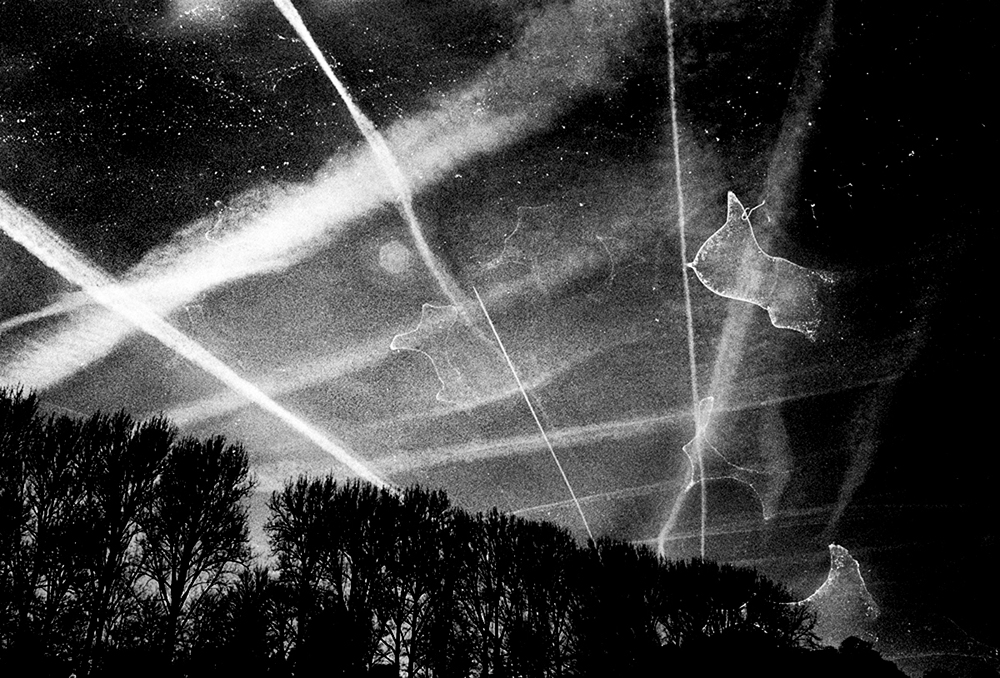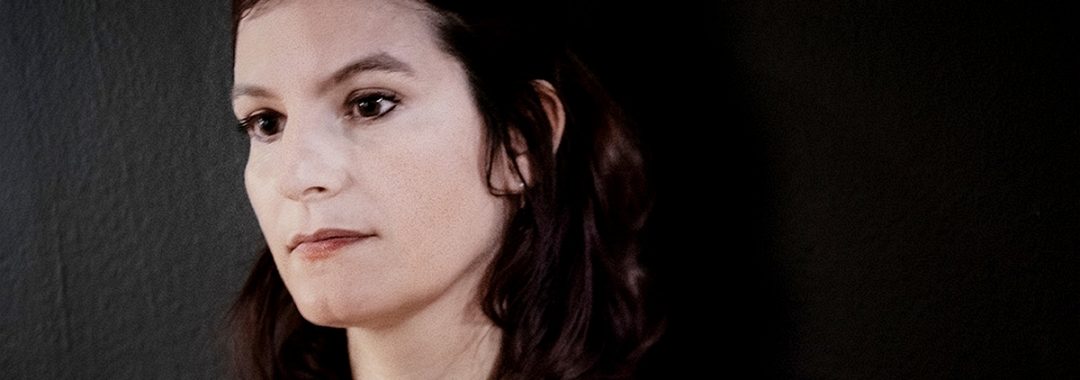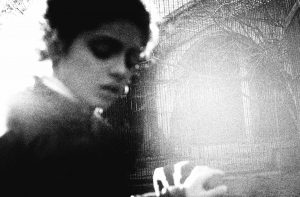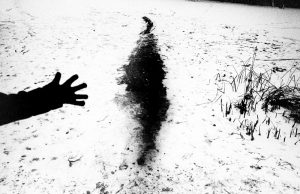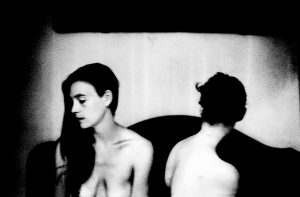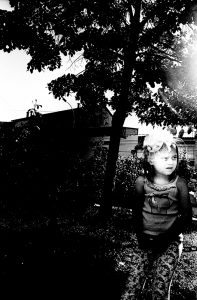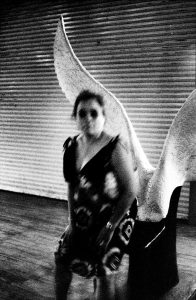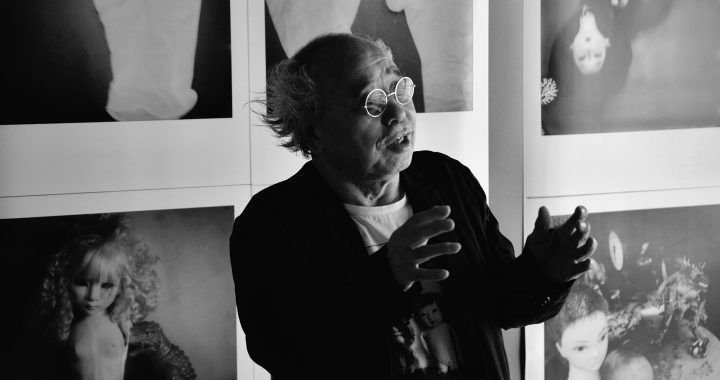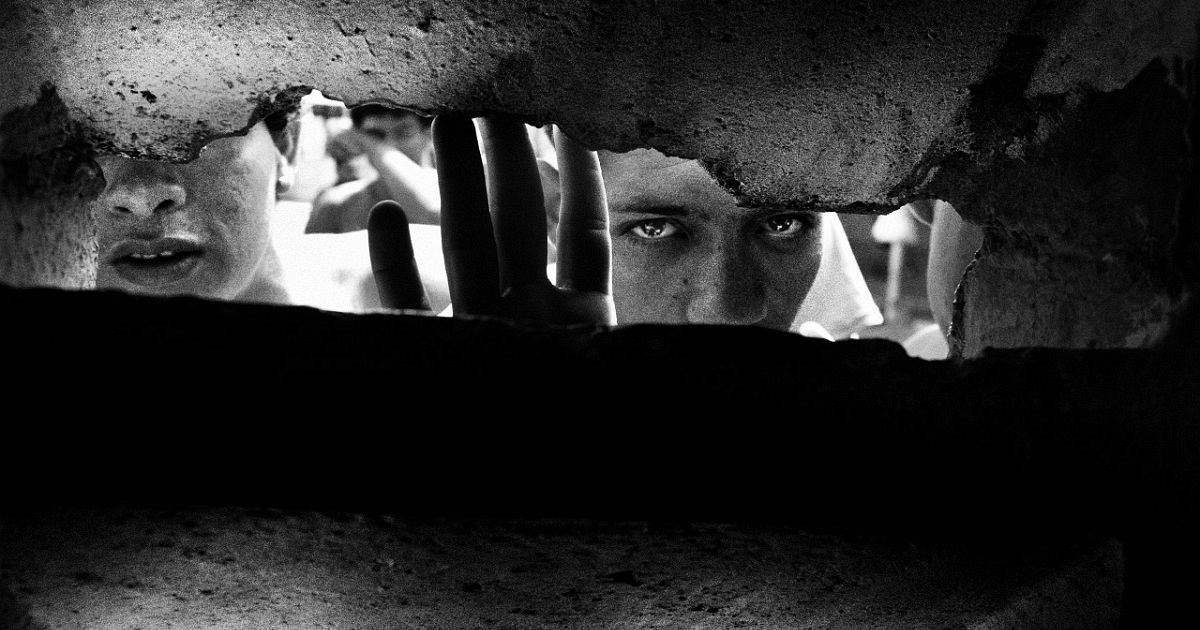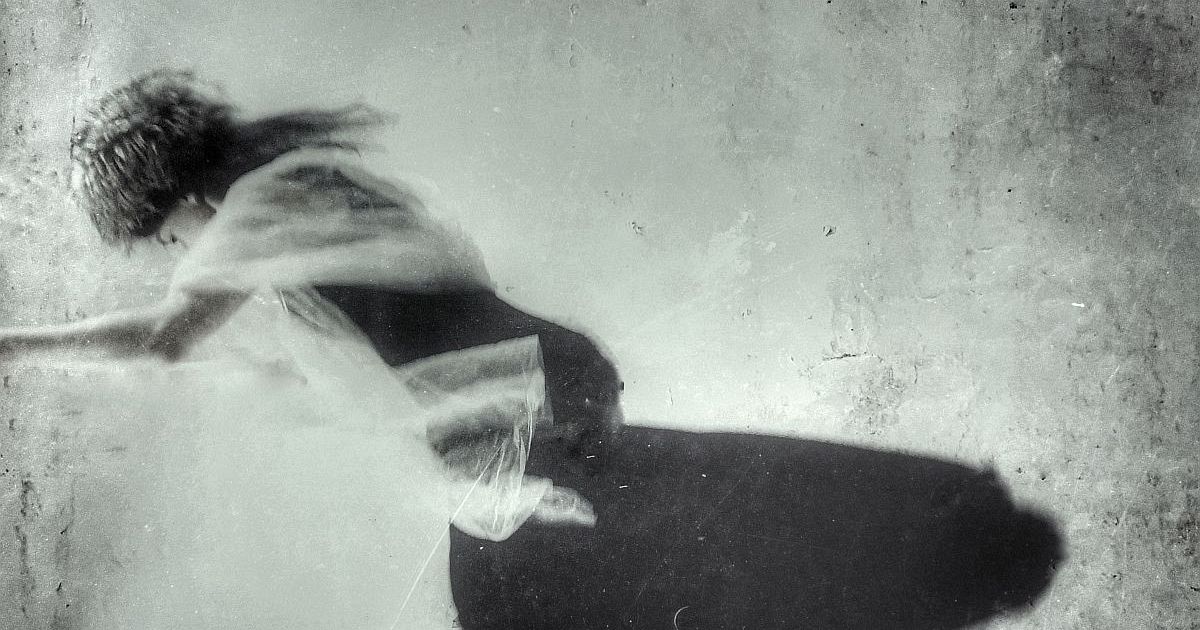Marie Sordat, curator of one of the most interesting collective exhibitions Eyes Wild Open, has completely immersed into the selection and has managed to put together pieces of art of significant authors with an expressive approach from the middle of 20th century until nowadays.
How has the idea of making exhibition Eyes Wild Open come to life?
I wrote the first project that would become Eyes Wild Open in 2013. At first, it was about showing together six of the youngest photographers of the project, which I felt close by age and work. I contact them as a photographer / young curator, and they said yes so this is how everything began. But after that, I needed to find a space for that exhibition and I wrote a very documented file about this kind of photography, where those young authors where coming from, theirs inspirations and that brougt me back to the 50’s. At that time, I felt that there was something strong there, major photographers like William Klein, Robert Frank, Ed van der Elsken and Christer Strömholm, the birth of a new photography, some kind of crazy energy that itself brought me to Japan in the 60’s and so on till I understood that all of this was connected in a way. It was a part of history of photography that has never been analyzed and showed together. I was totally fool to embrace it, but I did, and after the Museum of Botanique in Brussels said yes to me to produced the exhibition, we began to work more than four years together to achieve it as it is presented today.
The exhibition is built upon the historical concept. What is the main sign of the project?
As we were dealing with 70 years of photography, history was totally part of the project at the very beginning. In fact, all of it was born after the WWII, as in every art (cinema, painting, theater, etc) everything was to reinvent. How to talk about those photographers I mentionned before without putting them in context? It was impossible, and I like to think that strong pieces of art, whatever they are, are always linked to history, society, social life conditions, crisis, great mankind evolutions, etc. Even if it is in opposition, it is linked. So yes, I made a timeline that put in parrallele history from the 30’s till today and the moment where all the photographers of the project made significant works. I don’t think you make the same photographs before and after 1968 revolution, discovery of AIDS or wars. This is why this timeline is at the very beginning of the exhibition, to help visitors immerge in the project with all the keys to understand it.
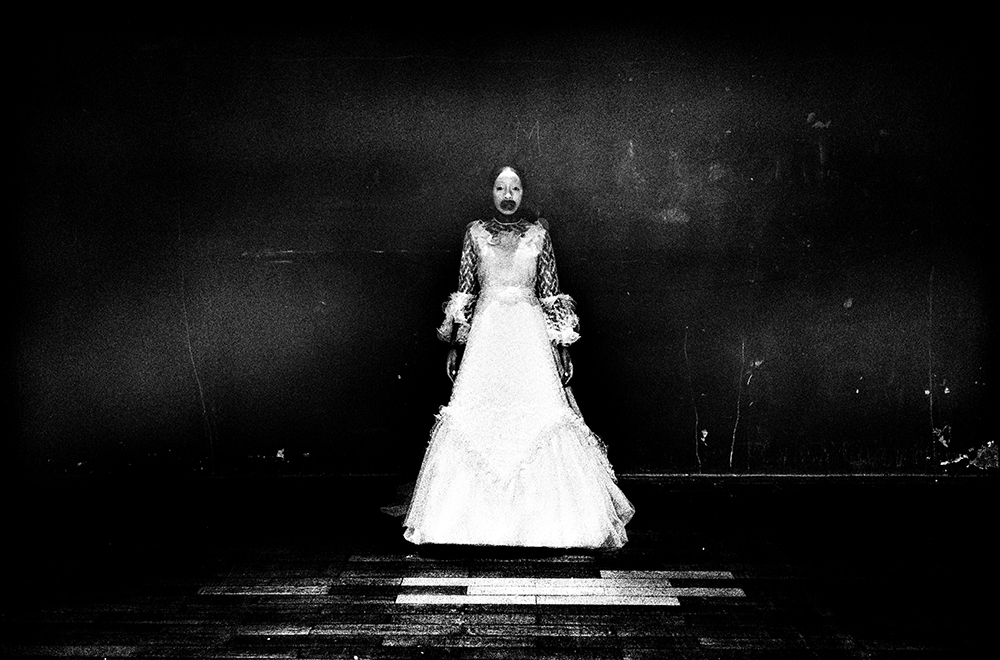
How do you perceive nowaday’s expressive photography?
I feel that it is a strong current of contemporary photography, very settled. Many young photographers are practising this kind of images. I’m curious about its evolution, how it’s already mixing with photojournalism or at the opposite with intimate documentary. Photographers feel free to do what they want today, there are no more boundaries between ways of expression, not to mentionned diffusion amazing evolution last ten years. So let’s just watch what will happen, just stay true in your expression and in your position towards others.
Expressive photography touches psychics and openness to eroticism. Why is it so?
Is it the opposite to today’s cold conceptual projects from which are emotions completely vanishing? For sure what you call expressive photography – some says subjective, I prefer existencialist photography exactly because of what you mention in your question, is an expression of life. Life goes in every direction so of course those images goes directly to us, in a way or another. It can be both in mind and/or physical as you express it. We feel less lonely watching them because every each of us has experienced something that is close to what those photographers try to show to us. Love, sexuality, gender questions, sadness, dreams, hope, humor, childhood, loneliness or whatever emotions human beings can feel, those images make echos with it. So yes, it is by definition in opposition with the major current of actual photography that consist in being very distant. I don’t know if emotions are totally vanished but it doesn’t touch me at all. I love many approaches in photography, there are everywhere many strongs works, past or current, I prefer to focus on that!
For the exhibition, you have managed to address a few authors from Japan. What has particularly charmed you on their work?
Well, it’s not about being charmed, it’s about the fact that japanese photography have one of the important contemporary expression in photography. And specially in this project, the Provoke years were capital in what they were searching at that time and the shock it produced for everyone that saw the revues. That’s why it is presented in a big round structure at the center of the museum, as a reference. And of course, Daido Moriyama is present with all his Records, he proposed them in a 2H30 projection. And I really wanted to make a focus on Takuma Nakahira, one of the greatest thinker of japanese photography in the 60/70’s. His work is so powerfull, so premonitiry, so free. He invented this new langage as the tittle of his famous book For a langage to come annouced it clearly and it is such an inspiration for so many, even in an unconscious level. As he destroyed all his prints and negatives of this work, we present him in a suspended slideshow. To achieve that, the old book has to be fully scanned and retouched in order to produce clean images. But there will never be prints of those images, by respect for Nakahira’s choice. And to finish with Japan, I choosed to show, in a temptative of parity, Ishiuchi Miyako’s work from the 70’s, as she was the only women operating in this filiation at that time.
You have also found mutual connections as if they were an inspiration. Has this idea been carried out before the exhibition or in the process of its realization?
This idea was part of it since the very beginning. I searched and found precise images that were almost similar in order to show them together. Anders Petersen / Christer Strömholm duo with footsteps in a snowy cemetary are part of the beautiful story of how they met, Jacob Aue Sobol / William Klein duo with guns is a vibrant hommage to this classic image of last century, and Michael Ackerman / Robert Frank duo is a wink to The Americans. All those photographers knows each others, and it was important for me to play with that, in order to demonstrate that they are a real family in a special way.
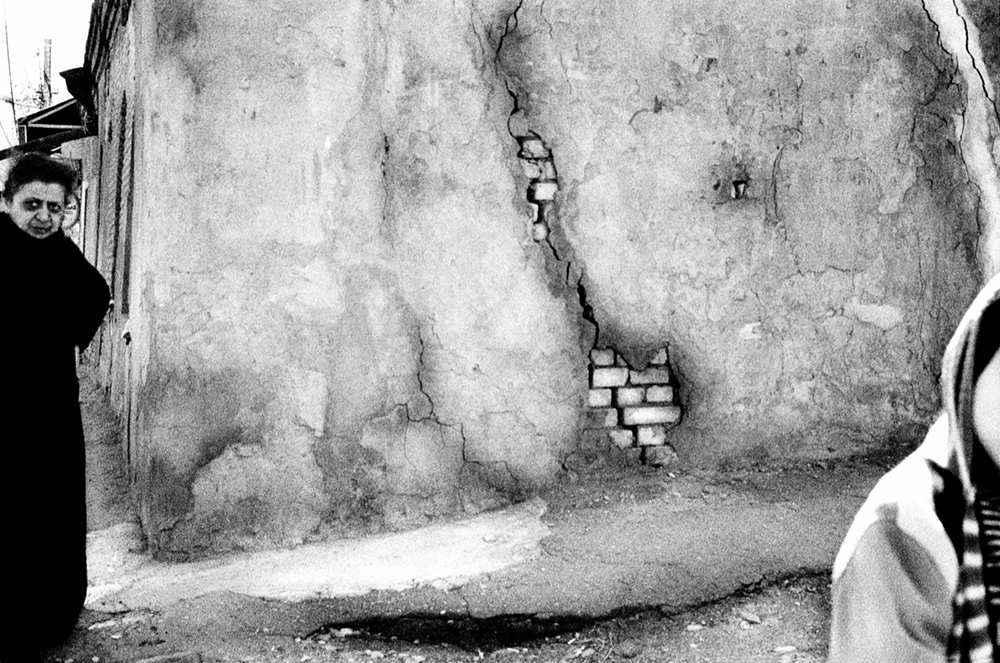
Anders Petersen is a unique author. How do you perceive his photographs?
There is so much to say about his work. And so much has been said and written! What I can just say is that this is a photography that goes directly throught your heart. Anders Petersen can make photographies about anything, it will always be strong, beautiful, poetic, disturbing. He has the perfect distance. And with a sense of compostion and light that belongs only to him.
Almost abstractly scary nakedness of Antoine d’Agata. With what has this author caught your attention?
It’s impossible not to be caught by his work, it is one of the most impressive photographer alive. What he’s building under our eyes for twenty years now is so strong, so dense, that I’m not sure we have measured it yet. And althought because it is shocking, this extreme way of working with no boundaries between life and photography, I wouln’t allow myself to yet have a clear opinion of his work. He’s one of those artist that have a unique point of view and more than that, he has a thought about our world. He’s structuring a photography that oblige you to think, to reconsider everything each time. Even if it’s absolutly hopeless and dark.
For the exhibition, you have also chosen the middle generation of photographers. On which base have you selected among them?
The selection, for all generations, was based on two evidences: I had to deeply love their work as to be abble to dedicate to them for so many years, and it had to be obvious that they were part of the family I was trying to make emerge. For that their works had to be at some point significant by what they invented and the complete selection had to present a large panel of all those expressions without being repetitive.
The exhibition has a whole part dedicated to animals. What do you think about these photographs?
I choosed to mix all the photographers on two walls, one dedicated to desire and another one to animals. From the very beginning I wanted to give every photographer its own space, but althought mixing them all at some point on the scenography. I have asked all of them pictures of animals because it’s a very recurrent subject on all those differents works. I think they use animals as a metaphor of human behaviours, well that’s what I fell indeed. It was such a pleasure to present them all together, and as we didn’t put captions under each photography, people are searching who did what in front of those walls.
Do you plan to exhibit also in the other cities?
No.
How did your EMPIRE book emerge?
We made this book with Emmanuel d’Autreppe of Yellow Now Editions in 2015. Emmanuel is a publisher and also a curator, we knew each other for a long time, he had showed my pictures in several exhibitions and at some point he proposed me to make the book together. We made it as a monography, it means that we went throught fifteen years of images to build it. As he knew my work well, he proposed that we mixed many series to make only one. It quite scared me as I’m very conservative in a way with my works, everything as a sense for me: tittles, order, chronology. But there, we make like a giant movie with recurrent figures, landscapes, with different waves like snow times, animals, love. It took us six months of editing before the final dummy. At some point I had to stop doing new images because we were still adding some until the last minut! Finally it’s more a long wandering in my mind than a monography in a usual way. That’s why I called it Empire, no other captions, just my own territory to explore with the reader.
Marie Sordat was born in France and lives and works in Belgium. Her images are part of the national french and belgian collections. Since 2004, her work has been published, projected and exhibited in museums, galeries and festivals: Espace Contretype, Botanique, Museum Dr Guislain, Palais Royal, Bozar, 44 Gallery, International Biennal of Photography and Visual Arts of Liège, Hotel de Sauroy, Rencontres d’Arles, Itinéraires des photographes Voyageurs, Boutographies, Tbilisi Photo Festival, Angkor Photo Festival, etc. In 2012, MotherLand enters the Bnf and obtains the Jury’s selection of the Virginia Price. She also teaches photography at Insas, for who she curated the exhibition Le Regard Exercé at Iselp, Brussels. Her work is represented by Box Galerie. Her monography EMPIRE has been published at Editions Yellow Now in 2015. She has curated the exhibition EYES WILD OPEN for the Botanique Museum ( 22 fev / 22 apr 2018 ) in Brussels and the book at André Frère Editions.
All photographs – © Marie Sordat.
